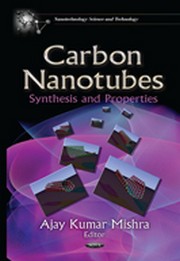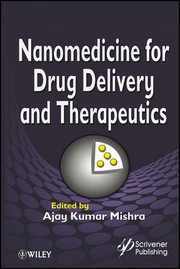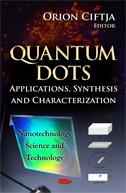

"Nejsmutnějším aspektem života v současné době je to, že věda shromažďuje poznatky rychleji, než společnost shromažďuje moudrost."
Isaac Asimov

Literatura
Molekula pro nanomedicínské technologie šetrnější léčby nádorů
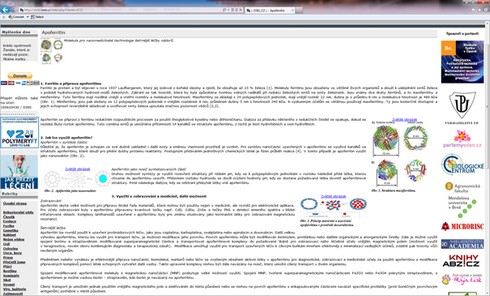 Informace o apoferitinu na stránkách internetového portálu Osel
http://www.osel.cz/index.php?clanek=6722
Informace o apoferitinu na stránkách internetového portálu Osel
http://www.osel.cz/index.php?clanek=6722
Brněnští vědci objevili efektivní nanotransportér léčiv
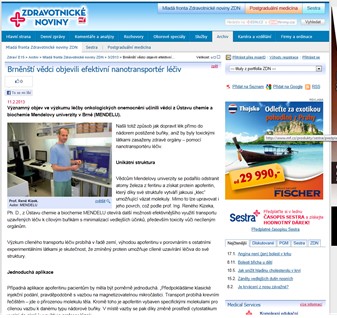 Natáčení s Brněnskou televizí proběhlo v pohodě. Vysílat se to bude v pondělí 18.2. v 18,30 – mělo by to být k vidění zde: http://www.b-tv.cz/ . Pro televizi bylo natočeno několik záběrů z prostředí laboratoře průtokových technik a fotometrie. Dva rozhovory byly zaměřeny na popis výsledků práce o apoferitinu.
Natáčení s Brněnskou televizí proběhlo v pohodě. Vysílat se to bude v pondělí 18.2. v 18,30 – mělo by to být k vidění zde: http://www.b-tv.cz/ . Pro televizi bylo natočeno několik záběrů z prostředí laboratoře průtokových technik a fotometrie. Dva rozhovory byly zaměřeny na popis výsledků práce o apoferitinu.
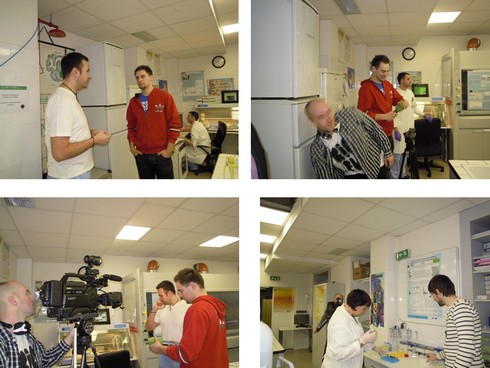 Před půlnocí
www
Před půlnocí
www
Nanomedicine: Nanotechnology, Biology and Medicine
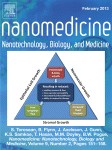 http://www.sciencedirect.com/science/journal/15499634
http://www.sciencedirect.com/science/journal/15499634
Volume 9, Issue 2, Pages A1-A6, 151-304, February 2013
Nanoparticle uptake in tumors is mediated by the interplay of vascular and collagen density with interstitial pressure
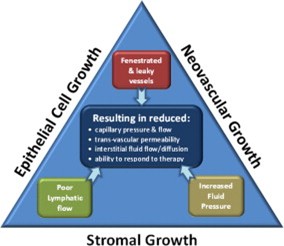 • Nanoparticle delivery into solid tumors is affected by vessel density, interstitial fluid pressure (IFP) and collagen, as shown in this article by contrasting the in vivo macroscopic quantitative uptake of 40 nm fluorescent beads in three tumor types.The fluorescence uptake was quantified on individual animals by normalization with the transmitted light and then normalized to normal tissue uptake in each mouse. Mean data for uptake in individual tumor lines then showed expected trends with the largest uptake in the most vascularized tumor line. Tumor lines with increased collagen were also consistent with highest interstitial fluid pressure and correlated with lowest uptake of nanoparticles. The data is consistent with a delivery model indicating that while vascular permeability is maximized by neovascular growth, it is inhibited by collagen content and the resulting interstitial pressure. Imaging of these parameters in vivo can lead to better individual noninvasive methods to assess drug penetration in situ. http://dx.doi.org/10.1016/j.nano.2012.07.002, How to Cite or Link Using DOI
• Nanoparticle delivery into solid tumors is affected by vessel density, interstitial fluid pressure (IFP) and collagen, as shown in this article by contrasting the in vivo macroscopic quantitative uptake of 40 nm fluorescent beads in three tumor types.The fluorescence uptake was quantified on individual animals by normalization with the transmitted light and then normalized to normal tissue uptake in each mouse. Mean data for uptake in individual tumor lines then showed expected trends with the largest uptake in the most vascularized tumor line. Tumor lines with increased collagen were also consistent with highest interstitial fluid pressure and correlated with lowest uptake of nanoparticles. The data is consistent with a delivery model indicating that while vascular permeability is maximized by neovascular growth, it is inhibited by collagen content and the resulting interstitial pressure. Imaging of these parameters in vivo can lead to better individual noninvasive methods to assess drug penetration in situ. http://dx.doi.org/10.1016/j.nano.2012.07.002, How to Cite or Link Using DOI
Polymeric nanogels as vaccine delivery systems
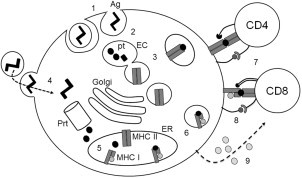 • Vaccination antigens (Ag), e.g., purified proteins, may be internalized by antigen-presenting cells (APC) from the external millieu by phagocytosis or other endocytic processes (1). Within endocytic compartments (EC), antigen is processed at acidic pH into peptide fragments (pt) (2). Peptides are then loaded to major histocompatibility complex (MHC) class II molecules (MHC II) transported into endocytic compartments in Golgi apparatus (Golgi)-originated vesicles (3). Mature endosomes fuse with the plasma membrane where peptides loaded to MHC class II molecules are exposed. Antigens may also be delivered to the cytosol and cleaved within the proteasome (Prt) originating peptides (4). These are transported into the endoplasmic reticulum (ER) where they are loaded to MHC class I molecules (MHC I) in a chaperone-assisted process (5). Peptide-loaded MHC class I molecules are transported to the cell membrane (6), where they can be recognized by specific CD8+T-cells, whereas CD4+T-cells recognize peptides presented in the context of MHC class II molecules (7). APC also provide co-stimulatory stimuli by either surface molecules (8) or soluble factors such as cytokines (9). http://dx.doi.org/10.1016/j.nano.2012.06.001, How to Cite or Link Using DOI
• Vaccination antigens (Ag), e.g., purified proteins, may be internalized by antigen-presenting cells (APC) from the external millieu by phagocytosis or other endocytic processes (1). Within endocytic compartments (EC), antigen is processed at acidic pH into peptide fragments (pt) (2). Peptides are then loaded to major histocompatibility complex (MHC) class II molecules (MHC II) transported into endocytic compartments in Golgi apparatus (Golgi)-originated vesicles (3). Mature endosomes fuse with the plasma membrane where peptides loaded to MHC class II molecules are exposed. Antigens may also be delivered to the cytosol and cleaved within the proteasome (Prt) originating peptides (4). These are transported into the endoplasmic reticulum (ER) where they are loaded to MHC class I molecules (MHC I) in a chaperone-assisted process (5). Peptide-loaded MHC class I molecules are transported to the cell membrane (6), where they can be recognized by specific CD8+T-cells, whereas CD4+T-cells recognize peptides presented in the context of MHC class II molecules (7). APC also provide co-stimulatory stimuli by either surface molecules (8) or soluble factors such as cytokines (9). http://dx.doi.org/10.1016/j.nano.2012.06.001, How to Cite or Link Using DOI
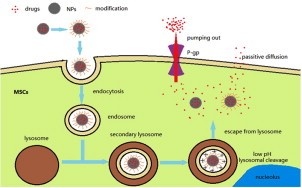 The targeted delivery of anticancer agents is a promising field in anticancer therapy. Mesenchymal stem cells (MSCs) have inherent tumor-tropic and migratory properties, which allow them to serve as vehicles for targeted drug delivery systems for isolated tumors and metastatic diseases. MSCs have been successfully studied and discussed as a vehicle for cancer gene therapy. However, MSCs have not yet been discussed adequately as a potential vehicle for traditional anticancer drugs. In this review, we will examine the potential of MSCs as a targeted-delivery vehicle for anticancer drug-loaded nanoparticles (NPs), summarize various challenges, and discuss possible solutions for these challenges.
From the Clinical Editor
In this review, the feasibility of mesenchymal stem cell-based targeted delivery of anticancer agents is discussed. http://dx.doi.org/10.1016/j.nano.2012.06.003, How to Cite or Link Using DOI
The targeted delivery of anticancer agents is a promising field in anticancer therapy. Mesenchymal stem cells (MSCs) have inherent tumor-tropic and migratory properties, which allow them to serve as vehicles for targeted drug delivery systems for isolated tumors and metastatic diseases. MSCs have been successfully studied and discussed as a vehicle for cancer gene therapy. However, MSCs have not yet been discussed adequately as a potential vehicle for traditional anticancer drugs. In this review, we will examine the potential of MSCs as a targeted-delivery vehicle for anticancer drug-loaded nanoparticles (NPs), summarize various challenges, and discuss possible solutions for these challenges.
From the Clinical Editor
In this review, the feasibility of mesenchymal stem cell-based targeted delivery of anticancer agents is discussed. http://dx.doi.org/10.1016/j.nano.2012.06.003, How to Cite or Link Using DOI
Multiple fold increase in activity of ferroxidase–apoferritin complex by silver and gold nanoparticles
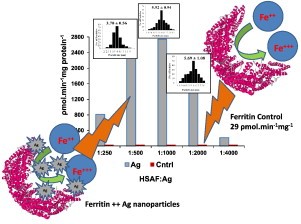 The effect of silver (Ag) and gold (Au) nanoparticles on the ferroxidase activity of apoferritin showed a 110-fold increase in specific activity and a 9-fold increase over the control at the respective molar ratios of Au-apoferritin and Ag-apoferritin nanoparticles (NPs) of 500:1 and 1000:1. Typical color change, from pale yellow to brown, occurred when apoferritin was mixed with AgNO3 or AuCl3 followed by sodium borohydride to afford respective metal-apoferritin NP complexes in a ratio of between 250:1 and 4000:1. These complexes were characterized by ultraviolet-visible inductively coupled plasma–optical emission spectroscopy, Fourier transform infrared spectroscopy, transmission electron microscopy, and energy-dispersive x-ray spectroscopy. Transmission electron microscopy revealed that the size of NPs increased as the molar ratio of metal to apoferritin increased, with an average size of 3–6 nm generated with Au-to-apoferritin and/or Ag-to-apoferritin molar ratios of 250:1 to 4000:1. Fourier transform infrared spectrometry showed no structural changes of apoferritin when the NPs were attached to the protein.
From the Clinical Editor
• In this paper the utility of gold and silver nanoparticles in augmenting the activity of the ferroxidase-apoferritin complex is described. Both NPs dramatically increased the ferroxidase activity. http://dx.doi.org/10.1016/j.nano.2012.05.020, How to Cite or Link Using DOI
The effect of silver (Ag) and gold (Au) nanoparticles on the ferroxidase activity of apoferritin showed a 110-fold increase in specific activity and a 9-fold increase over the control at the respective molar ratios of Au-apoferritin and Ag-apoferritin nanoparticles (NPs) of 500:1 and 1000:1. Typical color change, from pale yellow to brown, occurred when apoferritin was mixed with AgNO3 or AuCl3 followed by sodium borohydride to afford respective metal-apoferritin NP complexes in a ratio of between 250:1 and 4000:1. These complexes were characterized by ultraviolet-visible inductively coupled plasma–optical emission spectroscopy, Fourier transform infrared spectroscopy, transmission electron microscopy, and energy-dispersive x-ray spectroscopy. Transmission electron microscopy revealed that the size of NPs increased as the molar ratio of metal to apoferritin increased, with an average size of 3–6 nm generated with Au-to-apoferritin and/or Ag-to-apoferritin molar ratios of 250:1 to 4000:1. Fourier transform infrared spectrometry showed no structural changes of apoferritin when the NPs were attached to the protein.
From the Clinical Editor
• In this paper the utility of gold and silver nanoparticles in augmenting the activity of the ferroxidase-apoferritin complex is described. Both NPs dramatically increased the ferroxidase activity. http://dx.doi.org/10.1016/j.nano.2012.05.020, How to Cite or Link Using DOI
Polyamidoamine dendrimer nanoparticle cytotoxicity, oxidative stress, caspase activation and inflammatory response: experimental observation and numerical simulation
Mechanisms underlying the in vitro cytotoxicity of Polyamidoamine nano-dendrimers in human keratinocytes are explored. Previous studies demonstrated a systematic, dendrimer-generation-dependent cytotoxicity, oxidative stress, and genotoxicity. The emerging picture is of dendrimer endocytosis, endosomal rupture and subsequent mitochondrial attack and cell death. To understand the underlying mechanisms, the evolution of reactive oxygen species, intracellular glutathione, caspase activation, mitochondrial membrane potential decay, and inflammatory responses have been examined. Early-stage responses are associated with endosomal encapsulation, later-stage with mitochondrial attack. In all cases, the magnitude and evolution of responses depend on dendrimer generation and dose. The early-stage response is modelled using a rate equation approach, qualitatively reproducing the time, dose and generation dependences, using only two variable parameters. The dependence of the response on the nanoparticle physicochemical properties can thus be separated from internal cellular parameters, and responses can be quantified in terms of rate constants rather than commonly employed effective concentrations. From the Clinical Editor. This contribution reports on the intracellular mechanism of PAMAM dendrimer cytotoxicity in human keratinocytes. In all cases, the magnitude and evolution of responses depend on dendrimer generation and dose. Experimental data were supported by numerical simulation using only two variables. It is suggested that responses can be quantified in terms of rate constants rather than effective concentrations. http://dx.doi.org/10.1016/j.nano.2012.05.002, How to Cite or Link Using DOI
A novel therapeutic system for malignant glioma: nanoformulation, pharmacokinetic, and anticancer properties of cell-nano-drug delivery
Macrophage carriage, release, and antitumor activities of polymeric nanoformulated paclitaxel (PTX) were developed as a novel delivery system for malignant glioma. To achieve this goal, the authors synthesized PTX-loaded nanoformulations (nano-PTX), then investigated their uptake, release, and toxicological properties. Chemosensitivity was significant in U87 cells (P 0.05) at concentrations from 10-4 to 10-8 M following 72 hours' exposure to bone-marrow-derived macrophages (BMM)-nano-PTX in comparison with treatment with nano-PTX alone. The most significant reductions in U87 cell viability (P 0.05) were observed in the transwell cocultures containing BMM-nano-PTX. Limited toxicity to BMM was observed at the same concentrations. BMM functions were tested by analysis of microtubules and actin filaments, as the cytoarchitecture, demonstrating a similar cytoskeleton pattern before and after nano-PTX was loaded into cells. This data indicate that nanoformulations of PTX facilitate cell uptake, delay toxicity, and show improved therapeutic efficacy by BMM-nano-PTX delivery. From the Clinical Editor In this study the delivery, release, and antitumor activity of polymeric nanoformulated paclitaxel carried by macrophages are described as a novel and efficient system for treatment of resistant malignant glioma. http://dx.doi.org/10.1016/j.nano.2012.10.006, How to Cite or Link Using DOI
Influence of cationic lipid composition on uptake and intracellular processing of lipid nanoparticle formulations of siRNA
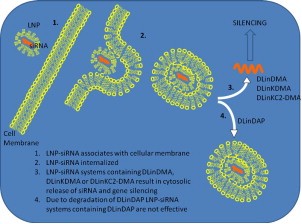 The in vivo gene silencing potencies of lipid nanoparticle (LNP)-siRNA systems containing the ionizable cationic lipids DLinDAP, DLinDMA, DLinKDMA, or DLinKC2-DMA can differ by three orders of magnitude. In this study, we examine the uptake and intracellular processing of LNP-siRNA systems containing these cationic lipids in a macrophage cell-line in an attempt to understand the reasons for different potencies. Although uptake of LNP is not dramatically influenced by cationic lipid composition, subsequent processing events can be strongly dependent on cationic lipid species. In particular, the low potency of LNP containing DLinDAP can be attributed to hydrolysis by endogenous lipases following uptake. LNP containing DLinKC2-DMA, DLinKDMA, or DLinDMA, which lack ester linkages, are not vulnerable to lipase digestion and facilitate much more potent gene silencing. The superior potency of DLinKC2-DMA compared with DLinKDMA or DLinDMA can be attributed to higher uptake and improved ability to stimulate siRNA release from endosomes subsequent to uptake.
From the Clinical Editor
This study reports on the in vivo gene silencing potency of lipid nanoparticle-siRNA systems containing ionizable cationic lipids. It is concluded that the superior potency of DLinKC2-DMA compared with DLinKDMA or DLinDMA can be attributed to their higher uptake thus improved ability to stimulate siRNA release from endosome. http://dx.doi.org/10.1016/j.nano.2012.05.019, How to Cite or Link Using DOI
The in vivo gene silencing potencies of lipid nanoparticle (LNP)-siRNA systems containing the ionizable cationic lipids DLinDAP, DLinDMA, DLinKDMA, or DLinKC2-DMA can differ by three orders of magnitude. In this study, we examine the uptake and intracellular processing of LNP-siRNA systems containing these cationic lipids in a macrophage cell-line in an attempt to understand the reasons for different potencies. Although uptake of LNP is not dramatically influenced by cationic lipid composition, subsequent processing events can be strongly dependent on cationic lipid species. In particular, the low potency of LNP containing DLinDAP can be attributed to hydrolysis by endogenous lipases following uptake. LNP containing DLinKC2-DMA, DLinKDMA, or DLinDMA, which lack ester linkages, are not vulnerable to lipase digestion and facilitate much more potent gene silencing. The superior potency of DLinKC2-DMA compared with DLinKDMA or DLinDMA can be attributed to higher uptake and improved ability to stimulate siRNA release from endosomes subsequent to uptake.
From the Clinical Editor
This study reports on the in vivo gene silencing potency of lipid nanoparticle-siRNA systems containing ionizable cationic lipids. It is concluded that the superior potency of DLinKC2-DMA compared with DLinKDMA or DLinDMA can be attributed to their higher uptake thus improved ability to stimulate siRNA release from endosome. http://dx.doi.org/10.1016/j.nano.2012.05.019, How to Cite or Link Using DOI
In vivo toxicity, biodistribution, and clearance of glutathione-coated gold nanoparticles
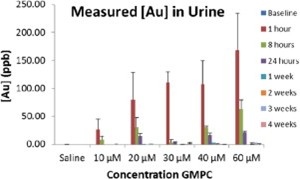 Gold nanoparticles are emerging as promising materials from which to construct nanoscale therapeutics and therapeutic delivery systems. However, animal studies have shown that gold nanoparticles modified with certain thiol monolayers such as tiopronin can cause renal complications and morbidity. Although these effects may be eliminated by coadsorbing small amounts of polyethylene glycol (PEG) onto the nanoparticle surface, PEG can also lower cellular internalization efficiency and binding interactions with protein disease targets, significantly reducing the potential for using gold nanoparticles as therapeutics. Using ICP-MS analysis of blood, urine, and several organs, we show in this article that glutathione-coated gold nanoparticles (1.2 nm ± 0.9 nm) cause no morbidity at any concentration up to and including 60 µM and target primary organs although providing gradual dissipation and clearance over time. This study suggests that glutathione may be an attractive alternative to PEG in the design of gold nanoparticle therapeutics.
From the Clinical Editor
This study describes the utility and toxicity of glutathione coated gold nanoparticles in comparison to PEGylated counterparts that are commonly used to increase “Stealth” properties and lower cytotoxicity. Too much PEG on the NPs can lead to lower cellular internalization efficiency and less efficient binding interactions with protein disease targets, significantly reducing the potential for using gold nanoparticles as therapeutics. http://dx.doi.org/10.1016/j.nano.2012.06.002, How to Cite or Link Using DOI
Gold nanoparticles are emerging as promising materials from which to construct nanoscale therapeutics and therapeutic delivery systems. However, animal studies have shown that gold nanoparticles modified with certain thiol monolayers such as tiopronin can cause renal complications and morbidity. Although these effects may be eliminated by coadsorbing small amounts of polyethylene glycol (PEG) onto the nanoparticle surface, PEG can also lower cellular internalization efficiency and binding interactions with protein disease targets, significantly reducing the potential for using gold nanoparticles as therapeutics. Using ICP-MS analysis of blood, urine, and several organs, we show in this article that glutathione-coated gold nanoparticles (1.2 nm ± 0.9 nm) cause no morbidity at any concentration up to and including 60 µM and target primary organs although providing gradual dissipation and clearance over time. This study suggests that glutathione may be an attractive alternative to PEG in the design of gold nanoparticle therapeutics.
From the Clinical Editor
This study describes the utility and toxicity of glutathione coated gold nanoparticles in comparison to PEGylated counterparts that are commonly used to increase “Stealth” properties and lower cytotoxicity. Too much PEG on the NPs can lead to lower cellular internalization efficiency and less efficient binding interactions with protein disease targets, significantly reducing the potential for using gold nanoparticles as therapeutics. http://dx.doi.org/10.1016/j.nano.2012.06.002, How to Cite or Link Using DOI
In vivo visualization of gold-loaded cells in mice using x-ray computed tomography
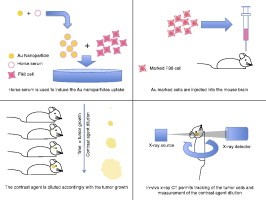 The ability to perform cell tracking using x-ray computed tomography combined with gold nanoparticles has been demonstrated recently on ex vivo samples using different malignant and nonmalignant cell lines. Here we proved the concept of the method for in vivo assessment in a small-animal model of malignant brain tumors. The limitations of the method due to radiation dose constraints were investigated using Monte Carlo simulations. Taking into consideration different x-ray entrance doses and the spatial resolution, the visibility of the cell clusters was evaluated. The results of the experiments conducted on mice implanted with F98 tumor cells confirmed the prediction of the Monte Carlo calculations. Small clusters of cells exogenously loaded with gold nanoparticles could be visualized using our in vivo method.
From the Clinical Editor
This article discusses the use of CT-based detection of gold nanoparticle loaded cells of interest in small-animal models of malignant brain tumors, where small clusters of cells loaded with gold nanoparticles could be visualized. http://dx.doi.org/10.1016/j.nano.2012.06.004, How to Cite or Link Using DOI
The ability to perform cell tracking using x-ray computed tomography combined with gold nanoparticles has been demonstrated recently on ex vivo samples using different malignant and nonmalignant cell lines. Here we proved the concept of the method for in vivo assessment in a small-animal model of malignant brain tumors. The limitations of the method due to radiation dose constraints were investigated using Monte Carlo simulations. Taking into consideration different x-ray entrance doses and the spatial resolution, the visibility of the cell clusters was evaluated. The results of the experiments conducted on mice implanted with F98 tumor cells confirmed the prediction of the Monte Carlo calculations. Small clusters of cells exogenously loaded with gold nanoparticles could be visualized using our in vivo method.
From the Clinical Editor
This article discusses the use of CT-based detection of gold nanoparticle loaded cells of interest in small-animal models of malignant brain tumors, where small clusters of cells loaded with gold nanoparticles could be visualized. http://dx.doi.org/10.1016/j.nano.2012.06.004, How to Cite or Link Using DOI
Metalothionein
Title: Increased Nuclear Thioredoxin-1 Potentiates Cadmium-Induced Cytotoxicity
Author(s): Go, Young-Mi; Orr, Michael; Jones, Dean P.
Source: TOXICOLOGICAL SCIENCES Volume: 131 Issue: 1 Pages: 84-94 DOI: 10.1093/toxsci/kfs271 Published: JAN 2013
Title: Effects of repeated dose administration of lead and zinc ions on protein synthesis in mouse liver
Author(s): Sulinskiene, Jurgita; Bernotiene, Rasa; Sadauskiene, Ilona; et al.
Source: TRACE ELEMENTS AND ELECTROLYTES Volume: 30 Issue: 1 Pages: 18-23 DOI: 10.5414/TEX01263 Published: 2013
Title: Molecular cloning, sequencing, and expression analysis of cDNA encoding metalloprotein H (MP II) induced by single and combined metals (Cu(II), Cd(II)) in polychaeta Perinereis aibuhitensis
Author(s): Yang, Dazuo; Zhou, Yibing; Zhao, Huan; et al.
Source: ENVIRONMENTAL TOXICOLOGY AND PHARMACOLOGY Volume: 34 Issue: 3 Pages: 841-848 DOI: 10.1016/j.etap.2012.09.001 Published: NOV 2012
Title: Expression of metallothionein isoforms in peripheral blood leukocytes from Thai population residing in cadmium-contaminated areas
Author(s): Boonprasert, Kanyarat; Ruengweerayut, Ronnatrai; Aunpad, Ratchaneewan; et al.
Source: ENVIRONMENTAL TOXICOLOGY AND PHARMACOLOGY Volume: 34 Issue: 3 Pages: 935-940 DOI: 10.1016/j.etap.2012.08.002 Published: NOV 2012
Aktuální výzvy pro speciální čísla časopisů/Current calls for a special issues
Int. J. Mol. Sci.
Redox Signaling in Biology and Patho-Biology
31.12.2012
http://www.mdpi.com/journal/ijms/special_issues/redox_signaling
Viruses
H5N1 Influenza Virus
31.1.2013
http://www.mdpi.com/journal/viruses/special_issues/H5N1
Int. J. Mol. Sci.
Antimicrobial Polymers
31.3.2013
http://www.mdpi.com/journal/ijms/special_issues/antimicrobial-polymers
Int. J. Mol. Sci.
Oxidative Stress and Ageing
20.5.2013
http://www.mdpi.com/journal/ijms/special_issues/oxidative_stress_aging
Int. J. Mol. Sci.
Oxidative Stress in Cardiovascular Disease
30.5.2013
http://www.mdpi.com/journal/ijms/special_issues/cardiovascular-disease
Int. J. Mol. Sci.
Magnetic Nanoparticles 2013
30.3.2013
http://www.mdpi.com/journal/ijms/special_issues/magnetic-nanoparticles_2013
Int. J. Mol. Sci.
Advances in Cancer Diagnosis
28.2.2013
http://www.mdpi.com/journal/ijms/special_issues/cancer-diagnosis
Int. J. Env. Res. Publ. Health
Antimicrobial Resistance Prevention and Control
31.6.2013
http://www.mdpi.com/journal/ijerph/special_issues/antimicrobial-resistance
Sensors
Enzymatic Biosensors
31.1.2013
http://www.mdpi.com/journal/sensors/special_issues/enzymatic-biosensors
Electrophoresis
CE, CEC and nLC of Amino Acids, Peptides and Proteins
28.2.2013
http://onlinelibrary.wiley.com/journal/10.1002/%28ISSN%291522-2683/homepage/call_for_papers.htm
Electrophoresis
Electrochemistry in (Bio-)Nanoanalysis, Electromigration and Liquid Phase Separations (2013)
31.1.2013
http://onlinelibrary.wiley.com/journal/10.1002/%28ISSN%291522-2683/homepage/call_for_papers.htm
Electrophoresis
Bioanalysis 2013
15.1.2013
http://onlinelibrary.wiley.com/journal/10.1002/%28ISSN%291522-2683/homepage/call_for_papers.htm
Nutrients
Special Issue "Polyphenols and Human Health"
28.2.2013
http://www.mdpi.com/journal/nutrients/special_issues/polyphenols
Water
"Inorganic Pollution of Water Environment"
15.3.2013
http://www.mdpi.com/journal/water/special_issues/water_environment
ODKAZY | LINKS




NOVÉ PUBLIKACE
Quantum Dots:Biological and biomedecical applications
Archiv
23_201322_2013
21_2013
20_2013
19_2013
18_2013
17_2013
16_2013
15_2013
14_2013
13_2013
12_2013
11_2013
10_2013
09_2013
08_2013

 | Zemědělská 1/1665 613 00 Brno Budova D | Tel.: +420 545 133 350 Fax.: +420 545 212 044 |  |
 |














